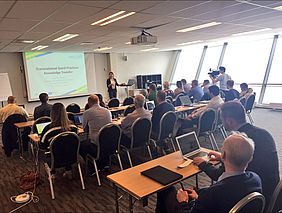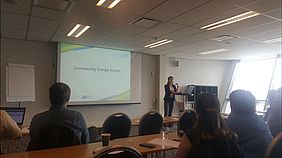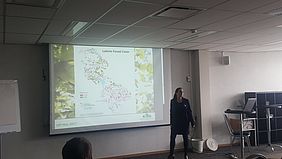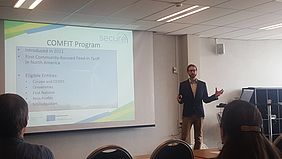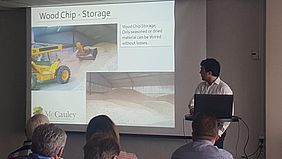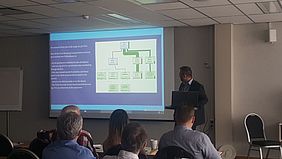SECURE partners have recently completed a process of collecting and documenting Good Practices from their regions. These practices are relevant for other regions who are seeking to overcome similar barriers such as improving their low-carbon economies.
As far as SECURE is concerned, good practice comes in different shapes and sizes, themes and topics. The practices all have a similar goal to improve energy efficiency and the use of renewable resources in public housing, buildings and infrastructures. Good Practices does not necessarily mean big, innovative, costly, complicated and demonstrating excellence. SECURE believes simple good practices are also important and of interest to other European regions. Importantly, the opportunity to learn from others, and adapt and reuse tried and tested good practices without reinventing the system is an easier option when financial resources are constrained.
About the seminar
Our project partners from the Association of Local Authorities in Västernorrland (Sweden) have presented the Solar map of Västernorrland. According to them, homeowners in the County can view the amount of solar energy that could be mounted on their property's roof and walls. Using the solar map, a person can estimate how much solar energy reaches their roof and make an assessment of whether it is appropriate to install solar cells. The high resolution 3D map shows the weather line, slope and size of tasks combined with SMHI solar radiation data. A person can locate their house on the map and click on its roof to find out how much solar potential is on the building.
Delegates from the Karelia University of Applied Sciences (Finland), project partner, have shared experiences from the SECURE project, including low-carbon baseline analysis results and lessons learnt within the project.
Furthermore, project partners from the Ecology Action Centre (Canada) have presented the results from the different regions and recommendations based on these results of the Community Energy Survey, that was carried out through SECURE. Afterwards, they have shared some lessons from the Nova Scotia Community Feed-in Tariff (COMFIT), a widely successful program which enabled community groups in Nova Scotia (Canada) to invest in local, renewable electricity projects. It was the first community feed-in tariff of its kind in North America and has 200MW of awarded projects. According to our partners, this has been instrumental in improving local acceptance of wind energy and ensuring local and indigenous project ownership.
Partners from Leitrim County Council (Ireland) have brought another interesting topic to the seminar, how to manage and harvest renewable forestry resources.
To finish with, attendants have got the opportunity to learn more about innovating to integrate new renewable technology (Biomass technologies) and how to change behavior to save more energy. In that way, they have revised a case of the Sollefteå municipality (Sweden). The housing company Solatum Hus & Hem has developed an energy efficiency strategy to reduce energy consumption by 20% over the period 2010-2020. They are continuously working on mechanisms to achieve this goal, and one activity is the "Energy & Environment" usergroup that started in the fall of 2013. This includes selected properties, including schools, preschools, group housing, retirement homes, public offices and libraries, a steering committee and 1-2 environmental representatives per property. This group concentrates mainly on behavioural change and engages with environmental agents in workplaces.
Do energy efficient houses appeal to our heads or hearts? Or can it be to both by thinking differently? In the end, they have discussed about the cost of the efficient buildings to ensure you have freedom to build what you want. Apart from that, they have learnt about water conservation in Finland as well.

